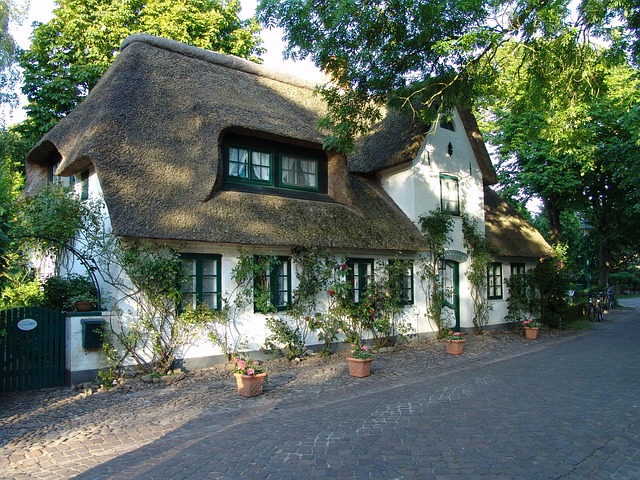Single-ply roofing materials like TPO, PVC, and EPDM are popular choices for commercial and residential properties with flat roofs due to their superior waterproof protection, durability, and versatility. These systems prevent leaks, blisters, and delaminations, offer UV resistance, and extend roof lifespans. Professional installation involves meticulous preparation, specialized tools, and adherence to best practices for optimal performance. Regular inspections and leak prevention maintain these low-maintenance, effective roof waterproofing solutions.
In today’s digital era, choosing the right roof waterproofing system is a crucial decision for both commercial and residential properties. Single-ply systems like TPO, PVC, and EPDM offer innovative solutions for flat roofs, providing superior protection against leaks and moisture. This comprehensive guide explores the advantages of single-ply roofing, installation best practices, longevity, and maintenance strategies, ensuring you’re equipped with the knowledge to make an informed choice for your professional roof waterproofing needs.
Understanding Single-Ply Systems: TPO, PVC, and EPDM
Single-ply roof systems have gained significant popularity for their effectiveness in providing robust waterproof protection for both commercial and residential properties. These systems, including TPO (Thermoplastic Olefin), PVC (Polyvinyl Chloride), and EPDM (Ethylene Propylene Diene Monomer), are designed to offer long-lasting solutions for various roofing challenges, especially on flat roofs where water accumulation can lead to severe damage over time.
Each of these materials boasts unique properties that contribute to their versatility and durability. TPO is known for its exceptional heat resistance, making it suitable for low-slope or flat roofs. PVC, with its excellent flexibility, provides a seamless seal, effectively preventing roof leaks. EPDM stands out due to its superior puncture resistance, ensuring long-term protection against potential debris damage. When installed correctly, these single-ply systems provide an effective barrier against water penetration, offering peace of mind and protecting the integrity of the building’s structure.
Advantages of Using Single-Ply for Roof Waterproofing
Single-ply systems like TPO, PVC, and EPDM offer several advantages when it comes to roof waterproofing, making them popular choices for both commercial and residential properties with flat roofs. These materials are designed for durability and long-term performance, ensuring a robust defense against water intrusion. Their seamless, unified layers provide superior resistance to punctures and tears, which are common issues with multi-layered systems. This results in reduced installation time and lower maintenance costs over the lifespan of the roof.
Moreover, single-ply membranes are highly versatile and can be installed over various substrates, including existing roofs. They offer excellent flexibility, allowing for easy handling during installation and the ability to conform to complex roof shapes. The high resistance to UV rays and harsh weather conditions further enhances their longevity. Additionally, these systems provide an effective barrier against moisture, vapor, and chemical penetration, addressing key aspects of professional roof waterproofing and contributing to a dry, safe, and comfortable indoor environment for both commercial and residential structures.
Applications: Commercial and Residential Roofs
Single-ply roofing systems like TPO (Thermoplastic Olefin), PVC (Polyvinyl Chloride), and EPDM (Ethylene Propylene Diene Monomer) are versatile and widely used for both commercial and residential roofs, offering a range of applications. These systems have become popular choices for flat roofs due to their effectiveness in providing robust roof waterproofing solutions. They are known for their durability and ability to withstand various environmental conditions, making them a reliable option for professional roof waterproofing.
For commercial roofing, these materials offer excellent leak prevention systems, ensuring the longevity of buildings such as warehouses, office spaces, and shopping centers. In residential settings, they provide homeowners with effective and affordable waterproof roof coatings, simplifying maintenance and repair processes. Waterproofing flat roofs is especially beneficial, as it prevents common issues like leaks, blisters, and delaminations, thus promoting a dry and comfortable living space below.
Installation Processes and Best Practices
The installation process for single-ply roofing systems like TPO (Thermoplastic Olefin), PVC (Polyvinyl Chloride), and EPDM (Ethylene Propylene Diene Monomer) involves careful preparation and meticulous techniques to ensure optimal performance as roof waterproofing systems. Professionals in the field adhere to strict best practices, beginning with a thorough inspection to identify any defects or irregularities on the existing roof surface. Proper ventilation and temperature conditions are crucial for successful installation, especially with materials like TPO that require specific curing processes.
During the application, it’s essential to use specialized tools and techniques tailored to each material’s characteristics. For instance, professional roof waterproofing involves precise sealing of seams and edges to prevent water penetration. Proper flashing installation, the use of compatible adhesives or fasteners, and adherence to manufacturer guidelines for overlap and fastener spacing are critical components of residential and commercial roof waterproofing. These meticulous steps, combined with high-quality waterproof roof coatings, form robust leak prevention systems, ensuring the longevity and integrity of flat roofs.
Longevity and Maintenance: Preventing Leaks and Ensuring Durability
Single-ply roof systems like TPO, PVC, and EPDM are renowned for their longevity and low maintenance requirements, making them popular choices for both commercial and residential roofing projects. These membranes offer excellent resistance to UV rays, extreme weather conditions, and chemical degradation, ensuring a robust barrier against leaks and extending the lifespan of the roof.
Regular inspection and prompt leak prevention are key to maintaining these systems. By addressing any potential issues early on, professional roof waterproofing solutions can be implemented using waterproof roof coatings or specialized repair techniques. This proactive approach not only prevents costly repairs but also guarantees the ongoing durability of waterproofing flat roofs, whether in commercial or residential settings.
Single-ply systems like TPO, PVC, and EPDM offer an efficient and effective solution for roofing, providing superior water protection through innovative materials. As a professional in the industry, adopting these systems for both commercial and residential roofs ensures longevity, leak prevention, and reduced maintenance costs. With proper installation practices, these waterproof roof coatings become reliable and durable, ensuring your property remains protected against the elements. Choose from these versatile waterproofing flat roof solutions to achieve a robust, long-lasting barrier that stands the test of time.
